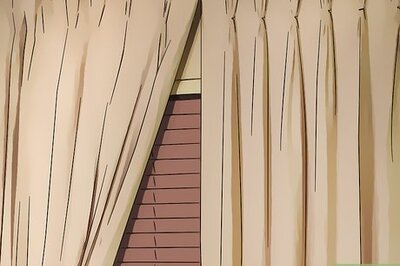
views
SANGAREDDY: Peacocks with their eye-catching and colourful coverts, the chirping of migratory birds and the exquisiteness of wildlife may soon be things of the past, with the denuding of forests, rapid industrialisation and disappearance of rural ambiance.The Manjeera water bed did not play host to a single migratory bird this year. This vouches for the fact that things have changed and changed for the worst.“Every January, birds from the Himalayas and Nigeria descend, but this time around not a single bird landed,” says Medak wildlife officer Srinivas.Hundreds of birds flapping their wings and fluttering used to paint a picture of beauty in the first three weeks of January, but the Painted Stock, Open Bill and other species did not turn up this year. “The depleting water table of Manjeera is the main reason as birds land at lush areas with good water,” the official said.Not only the visiting migratory birds, even local aves have taken to their wing on the Manjeera and Singur waterbeds, says bird lover M Vinod. Urbanisation of villages, doing away with multiple crop patterns and erasing hillocks with stone crushers has driven away Mask Deer, Sloth Bear, White Backed Vulture, Blossom Headed Parrot etc in large numbers, he said.Disappearance of lakes, wells and thatched houses have put sparrows on the endangered species list. Birds, sparrows in particular, cannot stand the least levels of pollution. They die or migrate.Even government houses under Indiramma scheme are built with concrete and there is no room for the little birds to have a nest of their own. Peacock, the national bird, has lost its colour and glamour and the number is coming down drastically as it has no protection. With water levels shrinking in the forest area in the district, the bird, with its long blue and green tail, is forced to come into the open for water and risk its life. Recently five birds died near Narsapur forest area reportedly after drinking water in the fields, which had pesticides. “The real reason for the death of peacocks would be known only after the post-mortem reports comes,” district forest officer Hari Kumar said.“Since Narsapur is close to Hyderabad, people used to come for hunting. Even locals used to kill peacocks, but now after the strict enforcement of law, peacocks are not touched. They are moving about freely,” claim the officials. Conservation of wildlife and providing habitable surroundings for birds, at least in the reserve and protected forest areas is the least the government could do.3 Leopards Poisoned to DeathThree years ago, pesticides claimed the lives of three leopards in Narsapur area. The leopards killed three dogs and came back the next day for the meat. Meanwhile, some people sprayed pesticide on the carcass deliberately and the three cats died after eating the meat. There were arrests made and the accused were remanded in custody.Nearly 50 leopards are said to be roaming in the forest areas of Narsapur, Medak, Ramayampeta and the border area of Kamareddy In Nizamabad district, officials said.Official apathy towards protection of wildlife also caused the death of two deer in the Pocharam reserve forest. The deer were trapped while trying to scale the fence. Officials, however, do not admit their negligence. The population of jackals and black bucks is also on the slide.




















Comments
0 comment